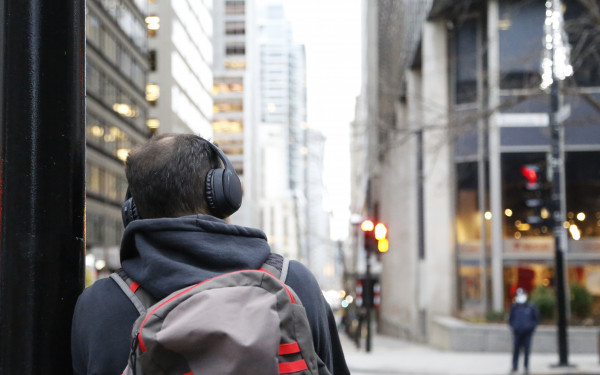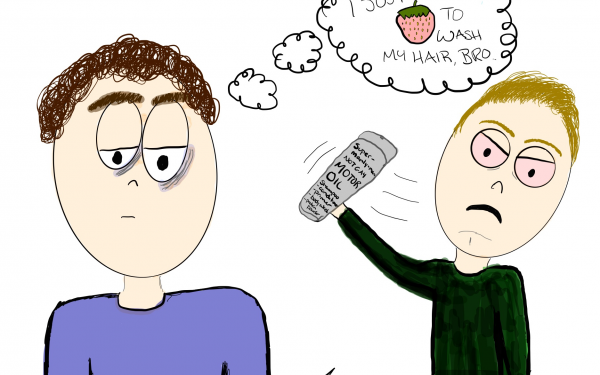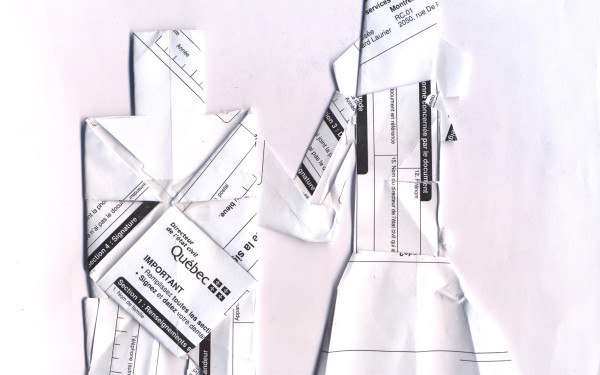How COVID-19 Testing Works
My Experience Getting Tested for Coronavirus
With all the buzz going around about the virus, you’re all probably wondering what’s going on behind the doors of the testing facility at the CUSM.
I had spent my March break with my girlfriend in Paris, seeing all the historic landmarks like the Louvre, the Champs Élysées, and Disneyland. We figured since there were only a handful of cases in France it should be safe for us to go there.
Oops.
Let me be the first one to tell you Parisians did not care about hygiene or the risk of infection a week ago. I’m a chatty guy so I ended up talking with people from just about every age group, and each and every one of them thought COVID-19 was all some big joke.
The country is registering thousands of cases now.
Fast forward to March 8, coming home through YUL, where I discovered not only had the Canadian government failed to put any travel restrictions in place, they also had no screening process. All I saw at customs was a sign telling people feeling ill they should stay home for a bit.
After getting home, I began to think my cough and sore throat could be a potential risk. After going to classes on Monday, I decided it was best to play it safe and call Urgence-Santé at 811. Their hold tune played for maybe two minutes before a nurse picked up. I asked her for advice, listing my symptoms and how I just came back from France. Of course, she told me to go home immediately and self-isolate until I could be tested.
I called in again the next day to ask 811 what my family should do while I was in isolation. This time I needed to hold for 10 minutes before being told my family could proceed as usual.
I was called by the testing clinic on March 10 around noon and told my appointment to be tested would be two days later at 3 p.m.. I was told I had to bring a mask and disinfectant to use when I arrived.
I called Urgence-Santé again around 10 a.m. on the day of my test to ask if they would be providing masks, only to find the 10 minute wait time I had encountered earlier was nothing. I waited 45 minutes and never got through to anyone.
The COVID-19 test has two parts: an oral portion and a nasal portion. The oral test is the classic popsicle stick and swab down the throat, while the nasal portion has the doctor putting the swab all the way to the top of the nasal cavity.
Later I found out a woman at the testing clinic was on hold for 8 hours over a two-day period.
I figured the used construction mask laying around in the furnace room would have to do.
Arriving at the clinic, I was greeted by a nervous guard from Les Commissionaires—a private security firm—who asked me if I was an employee. I responded I was actually here for a 3 p.m. appointment, at which point he gave me directions to the clinic. I asked him if there were better masks available, pointing out my useless construction mask, and he showed me a box of masks. I picked the last one out of the box and put it on, now heading to the triage site.
On my way there, I was greeted by two more security guards who guided me to the pre-triage seating area. It was now 3 p.m. After about 15 minutes I was called by the triage nurses who told me to wash my hands and, bizarrely, my medicare card. I did so then put my card in a bin that went under the glass separating us.
I gave them my information and they instructed me to sit in one of the three plastic-board cubicles to wait for when the doctor was ready. As I was about to take my seat, the guard told me to wait until it could be disinfected. The trouble was he kept asking the triage nurses to send someone, but the cleaner would only come after he asked three times.
The seats in pre-triage, which were directly across from the cubicles, would only be disinfected once every hour. The test rooms themselves took over a half-hour to be disinfected after each use. I would know because I was told to wait “just another half hour” for two-and-a-half hours.
It was during that time I really understood how much stress the system and the workers were under. As I was talking with the guard about how we mutually hated hospital waiting rooms, I asked him if he was alright because he and the other guards seemed rather anxious and stressed out.
He told me he’d been working since the morning and at first, he was pretty stressed out being around the virus and all, but now he was just frustrated. I began to share this frustration as I heard the nurses complain that protocol kept changing. No one in the lobby seemed to know what they were really doing.
By 5 p.m. I was the last person left in the clinic to be tested, but I still had to wait another 30 minutes to be called in for my turn. When I finally entered the room, I found it to be the familiar check-up room. What was different was the doctor who came in with what looked like a hazmat suit.
She told me I had been called earlier (which I hadn’t been), but regardless, I should get tested.
The COVID-19 test has two parts: an oral portion and a nasal portion. The oral test is the classic popsicle stick and swab down the throat, while the nasal portion has the doctor putting the swab all the way to the top of the nasal cavity.
If you jerk your head back in shock, as I did, they’ll have to do it to your other nostril.
When I was done being tested, the doctor gave me a bag with face masks and gloves to wear. She gave me strict instructions to stay isolated in my room until I receive my results.
Since I live with my parents, meals are to be brought on trays to my door and I’m to leave the tray outside the door when I’m done.
Our house has two bathrooms and I’m to have exclusive access to one of them. All of this should only last until two days from now, when they get back to me with—hopefully—negative results.
What I really took away from this was the general anxiety of everyone involved. The nurses loudly complained about the protocol being changed too fast for them to get used to it.
Guards—non-healthcare professionals—were promised to work the hours they wanted, only to find out once they showed up to their shift that they had to work full days.
Even the doctor who saw me seemed anxious and spoke with me very quickly—a far cry from the usual slow and steady pace that profession is known for.
If you have recently travelled abroad or are showing symptoms of runny nose, sore throat, cough, fever, or respiratory difficulties, please self-isolate and inform your professors of future absences.
The only way to currently book a testing appointment is to call the new emergency line 1-877-644-4545, no matter the wait time.
The testing clinic is located on the first floor of the old Hotel Dieu emergency wing, at 201 rue des Pins.


_600_832_s.png)




